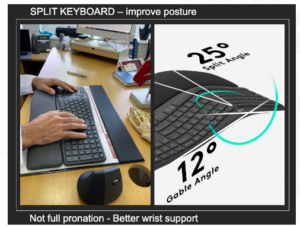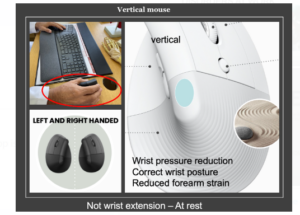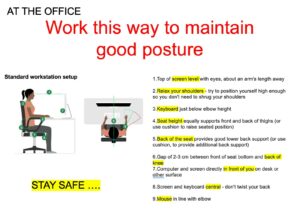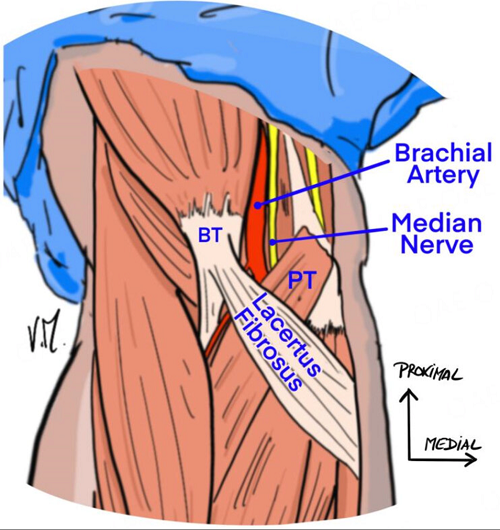
Preventing Musculoskeletal Disorders in the Workplace: Tips and Strategies
Learn effective ways to prevent musculoskeletal disorders at work from Dr. Marouane Bouloudhnine, a hand-to-shoulder specialist in Dubai.
Are you noticing stiffness or discomfort after a long day of repetitive tasks at work?
Are you struggling with persistent aches in your fingers, arms, and shoulders?
Do you find that simple movements are becoming more and more painful daily?
Did you know Musculoskeletal disorders (MSDs) are among the most common and costly health issues in the workplace, affecting millions of workers worldwide?
If it remains unaddressed, it leads to serious health problems and a drop in productivity. It also affects quality of life and mental health. Whether you’re an employer protecting a team or an employee seeking relief, preventing MSDs is crucial.
Dr. Marouane, a specialist hand-to-shoulder surgeon, shares practical tips on preventing musculoskeletal disorders. It is backed by research and statistics. In this blog, he gives clear strategies to help implement effective prevention measures in the workplace.
Understanding Musculoskeletal Disorders (MSDs)
Musculoskeletal Disorders are a broad category of conditions that affect
- Muscles,
- Tendons,
- Ligaments,
- Nerves, and
Common examples of MSDs include:
- Carpal Tunnel Syndrome
- Tendinitis
- Epicondylitis (Tennis Elbow)
- Bursitis
In severe cases, it also leads to Back Pain & Neck Strain.
Risk Factors for Developing Musculoskeletal Disorders
Understanding the risk factors for developing musculoskeletal disorders (MSDs) in the workplace helps prevent these conditions.
- Repetitive Motion: Doing the same task repeatedly, such as typing, assembly line work, or lifting. It strains muscles and joints leading to MSDs.
- Poor Ergonomics: Inadequate workstation design, such as improper chair height, poorly positioned monitors, or inadequate desk space also affects. It leads to poor posture and musculoskeletal strain.
- Heavy Lifting: Lifting heavy objects, especially without proper technique or assistance causes back injuries and other MSDs.
- Prolonged Static Postures: Sitting or standing for extended periods without movement leads to muscle fatigue and strain.
- Vibration: Exposure to vibration from tools or machinery. It happens in jobs like construction or manufacturing. It affects the hands and arms causing MSDs
The Impact of Musculoskeletal Disorders in the Workplace
The Bureau of Labor Statistics (BLS) reports that in 2020, there were 247,620 cases of workplace injuries and illnesses related to MSDs, with an average of 12 days away from work per case.
The World Health Organization (WHO) estimates that work-related musculoskeletal disorders cost businesses in the European Union alone between €240 and €370 billion annually, accounting for up to 2.6% of the Gross Domestic Product (GDP).
This includes direct costs, such as medical expenses and workers’ compensation, and indirect costs, such as lost productivity, absenteeism, and turnover.
Tips and Strategies for Preventing Musculoskeletal Disorders
1. Ergonomic Workstation Design
Dr. Marouane emphasizes the importance of designing workstations that support good posture. And also reduces strain on the body. Chairs must offer sufficient lumbar support. Desks should be at the proper height for comfortable typing and monitor viewing.
Split Keyboard: Ergonomic tools like a split keyboard help by minimizing wrist pronation and providing better support.

This split keyboard design minimizes wrist pronation, reducing the risk of carpal tunnel syndrome.
- Vertical Mouse: The vertical mouse promotes correct wrist posture, reduces pressure, and prevents forearm strain.

A vertical mouse supports correct wrist posture, minimizing strain and discomfort.
Encouraging employees to maintain neutral postures—with elbows close to the body, wrists straight, and feet flat on the floor. This helps prevent MSDs.
2. Proper Lifting Techniques
Dr. Marouane recommends that employees receive training in safe lifting techniques. This includes bending the knees and keeping the back straight while lifting heavy objects.
- Mechanical Aids: When lifting objects, it is recommended to use mechanical aids like dollies, carts, or lifting devices to reduce physical and manual strain.
- Team Lifting: For heavy or awkward objects, it’s best to opt for team lifting, This distributes the load and reduces the risk of injury.
3. Regular Breaks and Movement
Regular breaks for standing, stretching, and moving are crucial for employees in prolonged static postures. Implementing a break schedule helps reduce muscle strain.
- Microbreaks: Taking microbreaks, such as stretching or walking for a minute every hour. It helps keep the muscles engaged and prevents stiffness.
4. Employee Training and Education
It is crucial to conduct regular training sessions about ergonomics, proper lifting techniques, and recognizing early signs of MSDs.
- Early Reporting: Marouane believes that educating employees about the risks of MSDs is important. Remember to report symptoms early as it can help prevent the progression of these disorders.
- Workplace Culture: Fostering a workplace culture that prioritizes health and safety. It encourages employees to take proactive steps in preventing MSDs.
5. Use of Ergonomic Tools and Equipment
Investing in ergonomic tools, such as anti-fatigue mats, ergonomic chairs, and adjustable desks reduces the physical strain on employees.
- Ergonomic Accessories: Marouane recommends providing ergonomic accessories, such as wrist rests, footrests, and monitor stands. It supports proper posture and reduces strain.

An ideal ergonomic workstation setup to maintain good posture and prevent musculoskeletal strain.
Regularly assessing and updating ergonomic equipment ensures employee’s needs are met. It supports a healthy work environment.
6. Monitor and Adjust Work Practices
Dr. Marouane advocates for regular assessments of workstations. Also, emphasize work practices to identify potential risk factors for MSDs.
- Employee Involvement: Involving employees in the process of workstation design and modification ensures that their needs are met.
- Continuous Monitoring: Continuously monitoring employee health and adjusting work practices as needed to prevent MSDs.
FAQs on Preventing Musculoskeletal Disorders in the Workplace
Q1: What are musculoskeletal disorders (MSDs)?
A: Affect the muscles, nerves, tendons, joints, and cartilage. Caused by repetitive motion, overexertion, poor posture, and prolonged static positions.
Q2: How can MSDs be prevented in the workplace?
A: Involves ergonomic workstation design, proper lifting techniques, regular breaks and movement, employee training, and the use of ergonomic tools and equipment.
Q3: What are the common symptoms of MSDs?
A: Pain, discomfort, stiffness, swelling, and limited range of motion. Early intervention is key to prevention.
Q4: Why are MSDs a concern for businesses?
A: MSDs lead to significant financial costs for businesses due to medical expenses, workers’ compensation, lost productivity, and absenteeism.
Q5: How does ergonomic design help in preventing MSDs?
A: Supports good posture, reduces physical strain, and minimizes the risk of musculoskeletal injuries.
Conclusion
Preventing musculoskeletal disorders (MSDs) in the workplace is not just a matter of compliance. It is a strategic investment in employee health, productivity, and overall business success. Dr. Marouane emphasizes that by following these tips and strategies, employers create a safer and healthier work environment.
Remember, investing in MSD prevention is an investment in your employees’ well-being and your company’s future.
Take the first step towards a healthier workplace by evaluating your current setup and implementing the strategies discussed.
Your future self—and your workforce—will thank you.
Still have concerns? Reach out to Dr. Marouane Bouloudhnine for any hand-to-shoulder issues.






